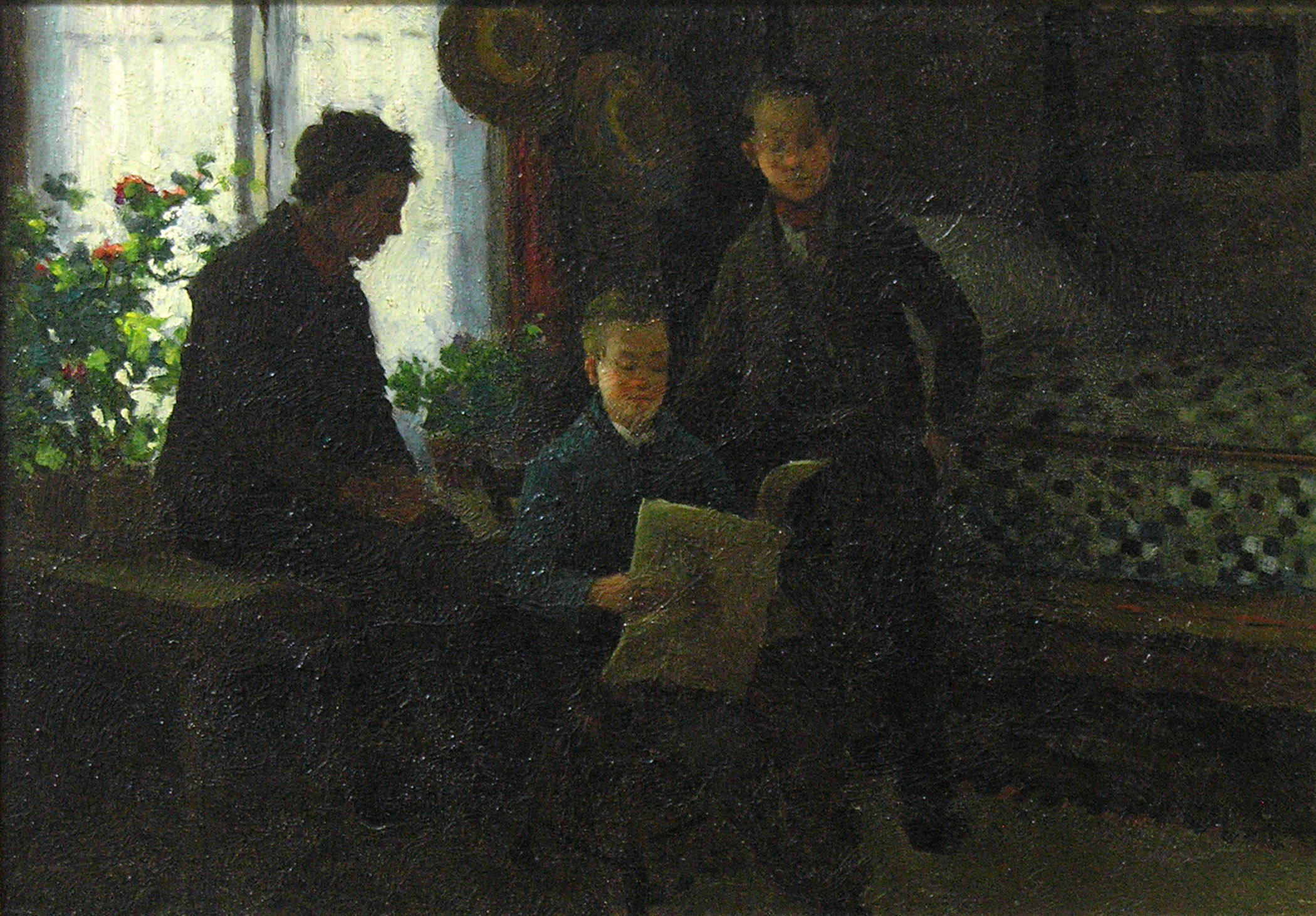Sell Privately and Avoid the Risk of Selling Canadian Art at Auction
"It's very clear that the majority of sales in the art market are going to be less public"
- Neal Meltzer, art dealer and former head of Christie's Contemporary Art

I cannot recall an auction season when two salesrooms were unable to sell their catalogue cover picture! Certainly, an overview of the results of four auction sales of Canadian art held in May and June shows rather lackluster prices with some obvious exceptions that, although limited in number, were the subject of press releases distributed by the auction houses.
A fourth auction sale, one which took place after my last newsletter, did achieve some strong numbers, even some record prices but when analyzed closely, in my opinion, it showed any number of soft prices. Beyond the obvious economic situation Canadians are experiencing right now, I have suggested in earlier newsletters that one of the issues which, in my opinion, makes for weaknesses is the over supply of works in a small market offered in a brief time period. In a tighter economy like the spring of '09 the ''problem'' is exacerbated.
Nonetheless, as I have written in the past, I think it a disservice to consignors to load up a sale with several works by the same artist, creating maybe good competition for the best offering of a given artist's work but splitting up potential buyers among the rest, usually resulting in relatively low prices and some "buy ins''. As an example, one auction house recently achieved an extraordinary and record price for a truly magnificent Emily Carr oil on canvas, but then pretty mediocre numbers for three other oils in addition to two which were left unsold. I cannot help but wonder if seven Carrs in one sale is a few too many.
There is however another and more recent phenomenon I might add to the discourse. Until recently the works of art that I have said here were sold for low prices would have been snatched up by dealers for re-sale. I can think of any number of shrewd buys we have made at auction and then re-sold shortly there after for only a fair profit. Nowadays, with auction prices easily retrievable through subscriptions to one of a few good commercial internet services, it is difficult for both dealers and collectors to re-sell their purchases, at least within any short term, even if those purchases were made very cheaply.
Quite honestly, today, pictures bought at auction are a nuisance to re-sell! I do not think that we are alone in finding it difficult to re sell even the most shrewd acquisition made at auction. Oh, yes, sure, you will see us and many of our colleagues buying in sales but despite what some of us may tell you, I would bet you that more often than not we/they are buying as agents for clients and not really "for inventory".
Sellers take note: Privately, that is, directly from you, we will pay aggressive prices to purchase top quality works of art "fresh" to the market, prices far in excess of what we could pay at auction. Unsold or lots "bought in" at auction are even more of a nightmare to sell. As an example of a recent experience we had which illustrates this scenario, in the late fall we purchased at auction an exquisite Cornelius Krieghoff composition, one in its original and untouched condition with 100% of the master's brilliance masked by 160 year old varnish. Before making its purchase we engaged a professional restorer to confirm our opinion of both its condition and its potential after a simple cleaning.
We also bought "Ste. Anne River, Early Winter, Quebec North Shore", ca. 1863 for a bid of 40% less than we had been prepared to go. We gave it only a fine and professional cleaning, freshened up the frame and presented the painting on both our web site and on the Gallery walls. One cannot imagine our professional pride presenting a painting of that quality and scarcity to collectors looking to buy what are genuinely great pictures! Countless visitors to the site and in person here in the Gallery admired the "Ste. Anne River, Early Winter, Quebec North Shore", ca. 1863 with many potentially interested parties subsequently discovering where we made its purchase. It did not take major sleuthing.
Had we purchased it privately for a significantly higher price and in turn been obliged to offer it for more, I am convinced that it would have sold more efficiently than this jewel did. Psychologically, I think that some people ask themselves why, if they did not buy the painting when they may have seen it publicly a couple of months previously, should they buy it now for a bit more. I must say in conclusion that the individual who made the purchase of "Ste. Anne River, Early Winter, Quebec North Shore", ca. 1863 made one of the most astute acquisitions of a fine Canadian painting I have seen in a long while.
If you missed it, CNBC Europe quoted Neal Meltzer, art dealer and former head of Christie's Contemporary Art department as saying: "It's very clear that the majority of sales in the art market are going to be less public, meaning more in the dealer and secondary market. That's a typical part of a boom and bust cycle. As a bust takes place, it's about risk aversion."
In the international art market the same communiqué, CNBC, cited Dublin based Clare McAndrew who runs the research and consulting firm Arts Economics as saying: "Auction houses are doing more private sales.... " and "buying dealerships to get into art fairs". A must read is, "The Art Economy: An Investor’s Guide to the Art Market" by Clare McAndrew (Liffey Press) published last year.
I continue to be curious about leveraging the Sotheby's and Christie's "brands" in to Canadian residential real estate sales market. The first time I saw one of their signs up locally I said to myself, "Wow! They're auctioning houses now!" Sotheby's Canada have essentially been outsourcing most of their Canadian art business to a Toronto auction house for several years now, an arrangement that is in the process of being terminated. As far as I know Christie's no longer even has an office in Canada and hasn't been involved in the Canadian art market for more than 35 years.
What's Next?
The summer gives one an opportunity to briefly reflect on what was a busy spring season before moving forward in preparation for what will be for us an exciting fall season, opening September 12 with a non selling Homage to Paul Vanier Beaulieu and then followed later with one person selling exhibitions by both Laurie Campbell and Danielle Lanteigne. For the immediate, we are thrilled to present a selection of six excellent paintings by Marc-Aurèle Suzor-Coté one of Canada's most accomplished artists of the late nineteenth Century.
Included in this important presentation is an untitled genre painting which to our knowledge has never been previously exhibited, a stunning composition of three rather formally dressed Quebec bourgeois young men or adolescents in an interior, their round straw hats hung on the rear wall, one seated with an open newspaper and a most beautiful illumination from an open window which highlights flowers on the window sill. This is nothing short of a masterpiece in Canadian art of 1896. This painting which we have called ''Adolescents lisant'' is well complemented with a most handsome selection of other fine Suzor-Coté paintings each available for your purchase. On August 1 we are also presenting a group of fine recent acquisitions.
Correction: I do wish to correct an inaccuracy I wrote in my previous newsletter in which I said that a third salesroom , one which did sell its catalogue cover painting, did not manage to sell the work for which it projected the highest price. In fact this was erroneous, and I do apologize for the mistake.








